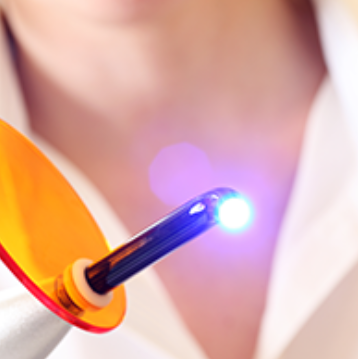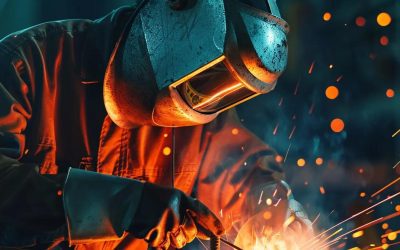Has Your Medical Laser Been Recalled?
FDA Medical Laser Device Recalls
FDA recall classification can happen after the firm recalling the medical device product conducts and communicates with its customers about a recall and provides contact information for customers with questions. Therefore, the recall information posting date (“create date”) indicates the date FDA classified the recall, it does not necessarily mean that the recall is new.
Medical device manufacturers are required to submit a pre-market notification or 510(k) if they intend to introduce a device into commercial distribution for the first time or reintroduce a device that will be significantly changed or modified to the extent that its safety or effectiveness could be affected. This database of releasable 510(k)s can be searched by 510(k) number, applicant, device name or FDA product code. Summaries of safety and effectiveness information is available via the web interface for more recent records. The database is updated once a week.
The FDA MedSun reporting program
The Medical Product Safety Network (MedSun) [1] is an adverse event reporting program launched in 2002 by the U.S. Food and Drug Administration’s Center for Devices and Radiological Health (CDRH). The primary goal for MedSun is to work collaboratively with the clinical community to identify, understand, and solve problems with the use of medical devices.
The FDA posts summaries of information about the most serious medical device recalls. These products are on the list because there is a reasonable chance that they could cause serious health problems or death.
Use the yearly lists to find information about Class I medical device recalls and some Class II and III recalls of interest to patients. The links give details about what to do if you own or use one of these products. If you wish to find information on a recall, or a correction or removal action that has not yet been classified, you can search the Medical Device Recalls Database.
How to find recall details
Please note that the FDA lists medical device recall notices by the date that it posts the recall rather than the recall initiation date. You can find the date that a firm initiated a recall in the text of the recall notice.
When a company learns that there is a problem with one of their medical devices, it proposes a correction or a removal depending on where the action takes place.
- Correction – Addresses a problem with a medical device in the place where it is used or sold.
- Removal – Addresses a problem with a medical device by removing it from where it is used or sold.
FDA uses the term “recall” when a manufacturer takes a correction or removal action to address a problem with a medical device that violates FDA law. Recalls occur when a medical device is defective, when it could be a risk to health, or when it is both defective and a risk to health.
A medical device recall does not always mean that you must stop using the product or return it to the company. A recall sometimes means that the medical device needs to be checked, adjusted, or fixed. If an implanted device (for example, an artificial hip) is recalled, it does not always have to be explanted from patients. When an implanted device has the potential to fail unexpectedly, companies often tell doctors to contact their patients to discuss the risk of removing the device compared to the risk of leaving it in place.
Examples
Examples of the types of actions that may be considered recalls:
- Inspecting the device for problems
- Repairing the device
- Adjusting settings on the device
- Re-labeling the device
- Destroying device
- Notifying patients of a problem
- Monitoring patients for health issues
Sometimes a company may be aware that there is a problem with a group of products, but it cannot predict which individual devices will be affected. To appropriately address the concern, the company may recall an entire lot, model, or product line.
Who recalls medical devices?
In most cases, a company (manufacturer, distributor, or other responsible party) recalls a medical device on its own (voluntarily).
When a company learns that it has a product that violates FDA law, it does two things:
- Initiates a recall (through correction or removal)
- Notifies the FDA.
Legally, the FDA can require a company to recall a device. This could happen if a company refuses to recall a device that is associated with significant health problems or death. However, in practice, the FDA has rarely needed to require a medical device recall.
What does the FDA Do about Medical Device Recalls?
When the FDA learns of a company’s correction or removal action, it reviews the strategy the company proposes to address the problem, assesses the health hazard presented by the product, determines if the problem violates FDA law, potential violations of FDA requirements, and if appropriate assigns the recall a classification (I, II, or III) to indicate the relative degree of risk.
- Class I: A situation where there is a reasonable chance that a product will cause serious health problems or death.
- Class II: A situation where a product may cause a temporary or reversible health problem or where there is a slight chance that it will cause serious health problems or death.
- Class III: A situation where a product is not likely to cause any health problem or injury.
Once classified, the FDA monitors the recall to ensure that the recall strategy has been effective. Only after the FDA is assured that a product no longer violates the law and no longer presents a health hazard, does the FDA terminate the recall.
How does the FDA Notify the Public about Medical Device Recalls?
When a company initiates a correction or removal action, the FDA posts information about the action in the Medical Device Recall Database. The FDA Medical Product Safety Network (or MedSun) [1] has newsletters, updates, and a searchable database of recalls.
The FDA updates the Medical Device Recall Database after it classifies the recall and again after it terminates the recall.
In addition, the FDA may post company press releases or other public notices about recalls, market withdrawals, and safety alerts that may potentially present significant risks to consumers or users of the product.
After a recall has been classified, the FDA notifies the public in the weekly Enforcement Report. In addition, the FDA posts consumer information about Class I and some Class II and III recalls in order to ensure that patients are aware of the seriousness of the potential health hazard posed by exposure to the product.
To learn more
Get started today by enrolling your company. For more information about medical or healthcare laser safety and correct laser handling, check out our courses for Healthcare Laser Safety and Healthcare LSO certification today and get certified today. For cosmetic laser safety, see our Cosmetic Laser Safety and Cosmetic LSO Certification courses for more information. We also have an FAQ section with common answers about our courses, certification options and kit offerings your own Laser Safety Officer (LSO) can use to build your safety program.
Sources
[1] MedSun home page: https://www.fda.gov/medical-devices/medical-device-safety/medsun-medical-product-safety-network




